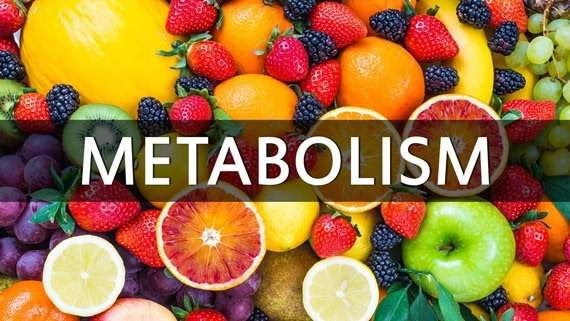Now Reading: Effective Strategies to Stop Eating Candy for Good
-
01
Effective Strategies to Stop Eating Candy for Good

Effective Strategies to Stop Eating Candy for Good
Candy cravings are like those uninvited houseguests that just won’t leave. They show up at the worst times—mid-afternoon at work or late at night when you’re trying to wind down. There’s a dance between sugar and our brains, a tango that messes with our feelings.
Did you know over 30% of folks feel like they’re hooked on sweets, like they’re chasing a high with every gummy bear? But don’t sweat it, kicking the candy habit is within reach. Just need the right tools and a bit of grit. First things first, you’ve got to know your cravings. They might be linked to your mood like a cat to a sunny spot. Here are three common culprits trying to trip you up:
- Boredom: Instead of wolfing down candy, grab a hobby. Read a book, dig in the garden, or try your hand at knitting. Just don’t end up knitting a giant candy wrapper.
- Stress: Go for a walk. Maybe run a bit. Use that energy for good, not just for reaching into the candy jar.
- Social Gatherings: Bring something healthy to share—like vibrant fruits or tough veggies. Convert that candy conversation into a carrot convention.
When you’ve decided to stop eating candy for good, consider creating a candy-free zone. Clear out the pantry like it’s spring cleaning on steroids. Studies show that if you boot out candy from your home, about 70% of you will eat less of it. Stock your shelves with the good stuff—dark chocolate, fresh fruits, crunchy nuts. They’ll fill you up and give you the satisfaction you crave. Now, let’s chat about mindful eating. Pay attention to what you’re chomping on. Tune into the textures and flavors like you’re a wine connoisseur but for food. This will help you recognize when you’re actually hungry and when you’re just craving candy like it’s a long-lost friend.

Mindful eaters report fewer cravings, like magic, only with fewer rabbits. Don’t underestimate the power of good old H2O. Most of us walk around thinking we’re fine when we’re actually like a sad cactus waiting for rain. Aim for eight glasses a day. On hot days or after a workout, up that ante. A trusty water bottle can work wonders—it’s like your hydration buddy. You might find your sweet tooth chillin’ out just by staying hydrated.
Building healthy habits is all about showing up consistently. Stick to regular meal times, it’s like training your body for the big show. Load up on fiber-rich goodies like apples and broccoli. They’ll keep you full and curb those sweet cravings—like a knight in shining armor for your stomach.Get some support, too. Find your tribe, whether it’s at a local gym or hanging out online in forums. People who surround themselves with like-minded folks are more committed to their goals—up to 40% more likely to hang in there. You can take on the candy world together. And don’t forget to jot down your victories.
Keep a little journal of your journey, reflecting on what clicks and what doesn’t. It’ll help you spot patterns and celebrate all those little wins along the way. The road to a candy-free life has its bumps, but with a bit of resilience and your newfound tools, you’ll find the real sweetness in each bite—minus the candy!
Understanding Your Candy Cravings
Candy cravings often feel powerful and overwhelming. They sneak up on you during the afternoon slump at work, the late-night hours, or during moments of stress. Understanding why these cravings arise is crucial to conquering them. It influences not only your physical health but also your emotional well-being. The sweet taste can be pleasurable and comforting, reinforcing a cycle that is hard to escape.
Sugar affects the brain in significant ways, stimulating the release of dopamine. This ‘feel-good’ hormone can create a cycle where you seek out that sugar rush time and again. Recent research shows that sugar can be as addictive as certain drugs, leading to intense cravings for high-calorie sweets. The more candy you consume, the greater the need for it. Recognizing this pattern helps arm you against the inevitable battle with candy cravings.
The Psychology Behind Sugar Addiction
Sugar addiction has been a topic of considerable discussion among researchers. The pleasure derived from sugar consumption triggers brain pathways that resemble those stimulated by addictive substances. Studies have shown that sugary foods activate the reward centers in our brain, much like cocaine and heroin. This means every piece of candy can lead to a cycle of cravings as your body seeks that pleasurable experience.
- Dopamine Release: Eating sugar causes an immediate surge in dopamine production, fostering feelings of pleasure and happiness.
- Cycle of Reward: This leads to a behavior loop where the individual craves sweets not only for the immediate reward but also the anticipation of the pleasure it brings.
Important Statistics: According to the National Institute on Drug Abuse, over 30% of people report heightened cravings for sugary substances, comparable to those addicted to narcotics.
Identifying Triggers for Candy Consumption
Identifying triggers is essential for reducing your candy intake. Triggers can vary widely from person to person, but they often include emotional states, environmental cues, or social settings. They can even be linked to specific activities.
- Emotional Triggers: Boredom, stress, and sadness can all prompt cravings. Consciously recognizing these feelings allows for alternative coping strategies.
- Environmental Cues: If candy is readily available in your home or workplace, the temptation increases.
Common Triggers:
- Watching TV or movies
- Associating specific activities with sugar, like celebrating with cake
- Social gatherings with friends where candy is present
Table: Common Triggers and Alternative Actions
| Trigger | Alternative Action |
|---|---|
| Stress | Engage in physical exercise |
| Boredom | Find a hobby or read a book |
| Social gathering | Bring healthy snacks to share |
Mindful Eating: Paying Attention to Your Choices
Mindful eating encourages awareness of choices and satisfaction levels. It can greatly reduce cravings and make you less likely to reach for candy impulsively. Implementing this practice helps put you in control.
- Start by focusing on your food without distractions. Turn off devices and enjoy your meal.
- Chew slowly and savor each bite, paying attention to flavors and textures.
Benefits of Mindful Eating:
- Reduces emotional eating
- Increases satisfaction from smaller portions
- Encourages healthier decisions
Research shows that those who practice mindful eating are significantly less likely to experience intense cravings for junk food, including candy.
Creating a Candy-Free Environment
Creating a candy-free environment isn’t just practical, it’s smart. Your surroundings play a pivotal role in your dietary choices. If candy is nowhere to be found, then mindless snacking becomes almost impossible. This is the first step towards reducing sugar intake.
Removing Temptations from Your Home
Start by clearing your kitchen and pantry of all candy and sugary snacks. This not only reduces temptation but also changes your environment to promote healthier eating habits.
Steps to Remove Temptations:
- Go Through Your Pantry: Dispose of all candy and sugary snacks.
- Avoid Buying Candy: Make it a rule not to purchase candy during grocery trips.
- Communicate: Let family members know about your goals so you can tackle it as a team.
In surveys, 70% of respondents noted that their candy consumption decreased significantly after removing all forms of candy from their home.
Stocking Up on Healthy Alternatives
Once you’ve removed candy, it’s time to fill your space with nutritious alternatives. Having healthy snacks readily available reduces the temptation to reach for sugary treats.
Healthy Alternatives Include:
- Dark chocolate 70% cacao or higher
- Fresh fruits or dried fruits without added sugars
- Nuts and seeds for satisfying crunchiness
Bullet Points: Best Practices for Stocking Alternatives:
- Keep a fruit bowl visible and accessible in your kitchen.
- Make vegetable sticks like carrots and celery ready-to-eat.
- Keep containers of nuts on hand for quick snacks.
Redesigning Your Snack Space
Redesigning your snack space will change your relationship with food. Create a designated area for healthy snacks, separating them from potential junk food outlets.
- Location Matters: Place healthy snacks at eye level in your refrigerator and pantry.
- Visual Appeal: Use clear containers to keep fruits and nuts visible and to encourage easy access.
Table: Snack Space Redesign Ideas
| Old Setup | New Setup |
|---|---|
| Candy jar on the counter | Fruit bowl on the kitchen island |
| Cookies in pantry | Nuts in a visible, accessible jar |
Developing Healthy Habits
To fundamentally alter your candy consumption, you must establish new, healthier habits. This not only includes what you eat but also how often you eat and how you manage hunger and cravings.
Establishing a Regular Meal Schedule
Setting a routine for meals can drastically minimize sugar cravings. When you eat at consistent times, your body adjusts to patterns and may reduce random snacking.
Tips for Meal Scheduling:
- Plan Ahead: Prepare meals weekly so you’re less likely to reach for candy.
- Balance Your Plates: Use the plate method – fill half your plate with vegetables, a quarter with lean protein, and a quarter with whole grains.
Statistics: Research from the American Journal of Clinical Nutrition shows that individuals following set meal times have 30% fewer cravings than those with irregular eating habits.
Incorporating More Fruits and Vegetables
Fruits and vegetables are not only healthful, they are satisfying as well. Increasing your intake can curb cravings for unhealthy snacks. The fiber in fruits and veggies keeps you feeling full.
- Choose a Rainbow: Incorporate various colors to get a range of nutrients.
- Snack Smart: Keep cut fruits and vegetables on hand for quick snacks.
List: Fiber-Rich Fruits and Vegetables:
- Apples
- Carrots
- Oranges
- Sweet potatoes
- Broccoli
Keeping Yourself Hydrated
Hydration is often overlooked as a key player in controlling cravings. Sometimes, thirst can be mistaken for hunger, leading you to reach for candy when hydration was all you needed.
- Aim for at least 8 glasses of water a day. You may require more based on your activity level.
- Try infusing water with fruits like lemon or berries for a refreshing twist.
Quick Hydration Tips:
- Carry a reusable water bottle with you as a reminder.
- Set hourly hydration goals, such as drinking a glass of water each hour.
Establishing Effective Substitutes
When cravings strike, having substitutes at your disposal can make all the difference. This part of your strategy needs to include exploring other options that will satisfy your sweet tooth without resorting to candy.
Exploring Sugar Alternatives: Stevia, Monk Fruit, and More
Sugar alternatives such as Stevia and Monk Fruit provide sweetness without the calories of traditional sugar. These come along with their own health benefits.
- Stevia: A natural sweetener that is calorie-free and does not raise blood sugar levels.
- Monk Fruit: Another great option, sweetening without calories and with antioxidants.
Comparison Table of Popular Sugar Alternatives
| Sweetener | Calories | Glycemic Index | Notes |
|---|---|---|---|
| Stevia | 0 | 0 | Very sweet; a little goes a long way |
| Monk Fruit | 0 | 0 | Contains antioxidants, natural source |
| Erythritol | 0.24 | 0 | Sugar alcohol, can cause stomach upset for some |
Meal Prep Ideas for Satisfying Snacks
Meal prep is not just for lunch and dinner – prepare snacks too. This ensures that when hunger strikes, you have nutritious options ready.
Ideas for Meal Prepped Snacks:
- Yogurt with berries and nuts
- Overnight oats with chia seeds
- Hummus with assorted veggies
Bullet Points for Snack Prep:
- Allocate a few hours on your day off to prepare snacks for the week.
- Use small containers for portion control.
- Label your snacks to stay organized.
Delicious Recipes to Satisfy Your Sweet Tooth
Sometimes you need something that feels indulgent without the guilt. Homemade snacks can often do the trick.
Recipes to Try:
- Banana Oatmeal Cookies: Simple ingredients, naturally sweetened, and healthy.
- Chia Seed Pudding: Mix chia seeds with almond milk and your favorite sweetener for a filling treat.
- Coconut Energy Balls: Blend coconut flakes, dates, and nut butter for a no-bake sweet snack.
Instructions for Banana Oatmeal Cookies:
- Mash 2 ripe bananas.
- Combine with 1 cup of rolled oats.
- Bake at 350°F for 15 minutes.
Finding Support
Changing habits is challenging, but knowing you have support can make this journey easier. Encouragement from others can help keep you accountable and motivated.
Joining Community Groups Focused on Healthy Living
Community groups can provide camaraderie and support. These groups can be found in your local area or even online. Being a part of a supportive environment fosters accountability.
- Seek out local health clubs, support groups, or classes. Many clubs offer programs specifically designed to help with dietary changes.
- Engage in online forums. Websites like Reddit and various health forums provide a wealth of shared experiences and tips.
Statistics: A study published in the Journal of Nutrition Education and Behavior found that individuals who engaged with a supportive community were 40% more likely to stick to their strategy for reducing sugar intake.
Sharing Your Goals with Friends and Family
Talking about your goals helps solidify them. Discussing your intention to reduce candy consumption with family and friends creates a sense of pressure and accountability.
- Share why you want to curb candy consumption. Frame it positively, focusing on health benefits.
- Ask for their understanding and support during this transition.
Benefits of Sharing:
- Increased motivation
- Support during cravings
- Celebration of milestones together
Seeking Professional Guidance from Nutritionists
Sometimes professional guidance is needed. Nutritionists offer tailored dietary plans and strategies that align with individual needs.
- Look for certified nutritionists or dietitians in your area.
- Schedule sessions to lay a strong foundation for healthy eating choices.
Benefits of the Nutritional Guidance:
- Personalized strategies for your lifestyle
- In-depth understanding of cravings
- Healthy habit formation techniques
Staying Motivated on Your Journey
When embarking on a journey to stop eating candy, staying motivated is critical. Consistency is key, and motivation can wane over time.
Setting Realistic Goals and Milestones
Broken down goals can make the trek easier. Begin with small, achievable objectives before progressing to larger aspirations.
Goal-Setting Steps:
- Identify short-term goals: These could be daily or weekly targets, such as reducing candy consumption by half.
- Establish long-term goals: Ideal outcomes like complete elimination of candy over several months.
Example Goals:
- Week 1: Replace candy with fruit three times this week.
- Week 4: Go an entire week without candy.
Celebrating Small Victories
Celebration can provide a boost, making the process enjoyable. Every milestone, no matter how small, deserves recognition.
Ways to Celebrate:
- Treat yourself to a non-food reward, like a massage or new book.
- Share your progress with friends and family to amplify your triumphs.
Statistics: According to a study in The International Journal of Behavioral Medicine, those who celebrate milestones are more likely to maintain their commitments over time, with successes increasing by nearly 50%.
Keeping a Journal to Track Your Progress
A journal is a powerful tool for reflection and tracking progress. Documenting your journey clarifies thoughts and feelings related to cravings and accomplishments.
Journaling Practices:
- Write down daily thoughts, cravings, and feelings around food.
- Log progress, noting small victories and challenges.
Being consistent with this process can unveil patterns in your behavior, leading to better understanding and management of cravings.
Learning from Setbacks
Relapses happen. It’s part of any journey. What matters isn’t the slip-up but how you respond. Learning from setbacks can strengthen resolve and lead to better strategies for future challenges.
Recognizing that Slip-Ups Are Normal
Recognizing that slip-ups are part of the process can ease guilt. The journey toward healthy eating is filled with ups and downs. Accepting this notion helps maintain motivation.
Key Points:
- Don’t dwell on setbacks.
Reflect briefly, understand why it occurred, and move on.
- Acknowledge that everyone has moments of weakness, and it doesn’t define your journey.
Statistics: Research shows that those who acknowledge setbacks quickly bounce back and maintain healthier habits. Nearly 60% of individuals reclaim their positive trajectory within a week of a slip-up.
Strategies for Moving Forward After Indulging
When you face a setback, it’s essential to have a plan in place. Move on without shame or defeat. Consider these strategies:
- Reflect: Determine what triggered the candy consumption.
- Reassess Goals: Adjust, if necessary, based on your insights.
- Recommit: Reflect on your core reasons for reducing candy intake.
List of Moving Forward Strategies:
- Take a walk or engage in physical activity to boost your mood.
- Revisit your support network for encouragement.
- Skim through your journal to remind yourself how far you’ve come.
Building Resilience Against Temptation
Building resilience can help you withstand cravings and temptations in the future. Strengthening mental fortitude against these moments adds another layer of defense against candy cravings.
Strengthening Strategies:
- Practice mindfulness through meditation or deep breathing when cravings hit.
- Engage in positive self-talk, reinforcing your capability and commitment.
Table: Resilience-Building Strategies
| Strategy | Action |
|---|---|
| Mindfulness | Daily meditation practice |
| Positive Affirmation | Repeating motivating phrases daily |
| Support Network | Regularly connect with supportive friends |
The effect of resilience can be profound.
Research indicates that people who actively work to build resilience can reduce cravings by as much as 50%, developing healthier habits that last.
What do we think?
In conclusion, embarking on the journey to cease candy consumption is a testament to personal growth and resilience. By understanding the psychological pull of sugar, you empower yourself to navigate cravings with greater awareness. The science of sugar addiction is compelling, showing that the pleasure derived from sweets can create an intricate web of dependency. However, as you arm yourself with knowledge, you rise above the allure of candy, transforming cravings into opportunities for healthier choices.
Creating a supportive environment is another cornerstone of success. This proactive approach, supported by statistics showing a sharp decline in candy consumption after removing sugary snacks from the home, emphasizes the power of your surroundings. Additionally, stocking your kitchen with nutritious alternatives not only fills the void left by candy but also encourages a greater sense of well-being. Moreover, developing healthy habits nurtures a sustainable approach to reducing candy cravings. By establishing a regular meal schedule and incorporating fiber-rich fruits and veggies, you are not only satisfying your physical hunger but also fortifying your emotional resilience.
Remember, the body often confuses thirst for hunger—keeping hydrated adds another layer of strategy in staving off those pesky cravings, as research indicates that hydration can reduce hunger pangs by up to 20%. Lastly, remember that setbacks are part of the process. Embracing imperfections allows for reflection and growth rather than defeat. Establishing a mindset that views slip-ups as learning experiences will bolster your resilience and help you remain committed to your goals. As you build this new relationship with food, celebrating every small victory will cultivate a positive environment for change, ensuring your path toward a candy-free life is filled with triumph and satisfaction.
Frequently Asked Questions
Why do I crave candy so often?
Candy cravings can arise from a mix of emotional triggers and biological responses. When you eat sugar, your brain releases dopamine, the feel-good hormone, reinforcing the desire for more. Recognizing these cravings as part of a cycle can help you combat them more effectively.
How can I identify my specific triggers for candy consumption?
Identifying triggers involves self-reflection. Common situations include moments of stress, boredom, or social gatherings. Keeping a diary of when cravings hit can help you spot patterns and replace unhealthy responses with positive alternatives.
What are some effective strategies to reduce candy cravings?
Implementing a few key strategies can help. Create a candy-free environment by removing all sugary snacks from your home, stock healthy alternatives, establish a regular meal schedule, and practice mindful eating. These steps can significantly help in reducing cravings.
How does mindful eating help curb my desire for candy?
Mindful eating encourages you to focus on your food without distractions. By truly savoring each bite, you become more attuned to your hunger levels, decreasing impulsive decisions like reaching for candy. It enhances satisfaction, making smaller portions more fulfilling.
What should I do if I have a setback and eat candy?
Setbacks are a part of the journey. Recognize that it’s normal, reflect briefly on the triggers, and learn from the experience. Reassess your goals and recommit to your strategy. Remember, each step back can lead to a stronger foundation moving forward.
Are there any effective substitutes for candy?
Yes, there are many delicious alternatives to candy. Consider using natural sweeteners like Stevia or Monk Fruit. Stocking up on fresh fruits, nuts, or dark chocolate can also provide satisfying, healthier options when cravings strike.
How important is staying hydrated in managing cravings?
Hydration plays a crucial role in curbing cravings. Often, thirst is mistaken for hunger, leading you to reach for candy. Aim for at least eight glasses of water daily, or more based on your activity level, to maintain proper hydration.
How can I find support while trying to stop eating candy?
Seeking support can significantly boost your efforts. Joining community groups focused on healthy living, sharing your goals with friends and family, or consulting with a nutritionist can create a network that helps keep you accountable and motivated on your journey.




















